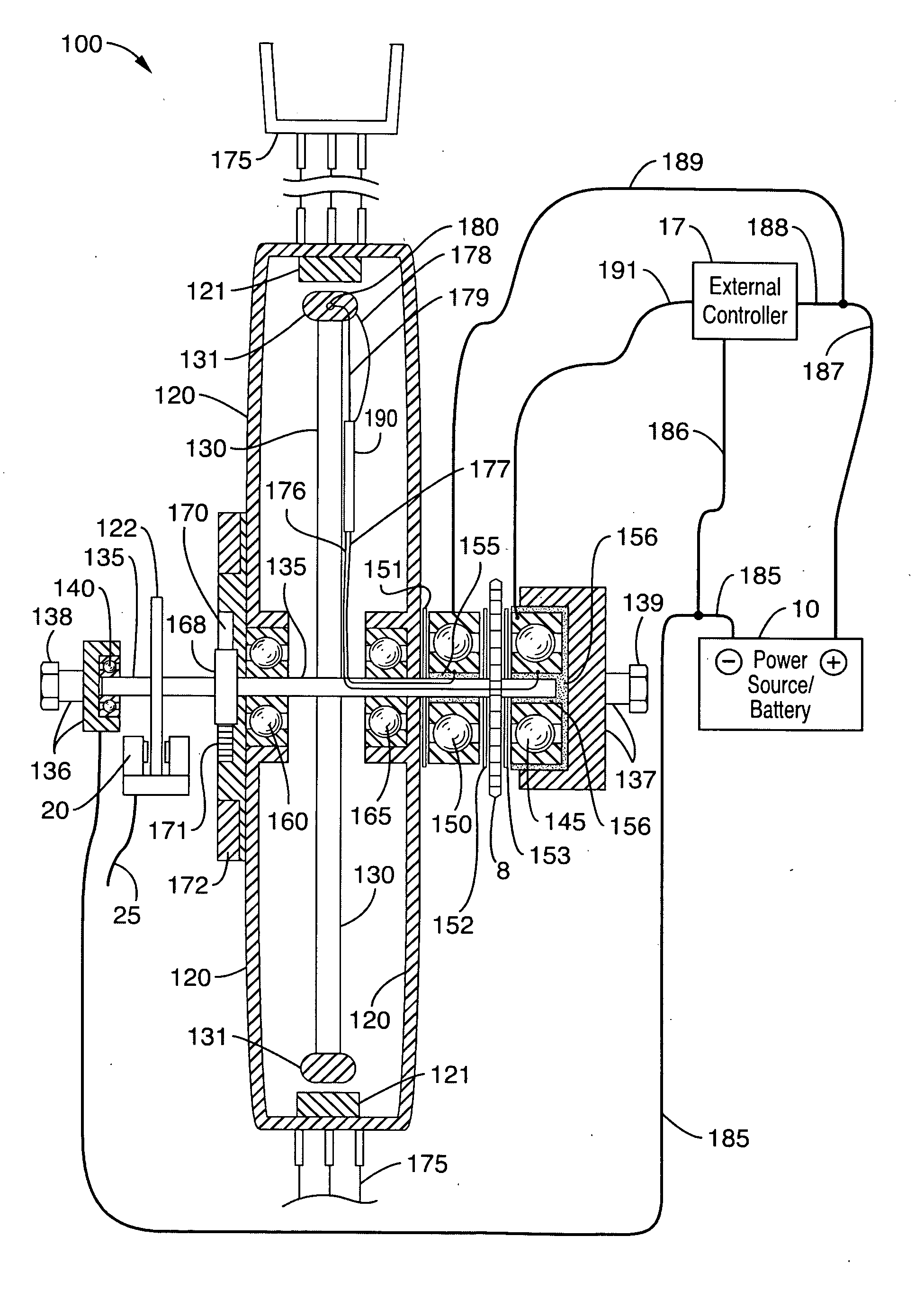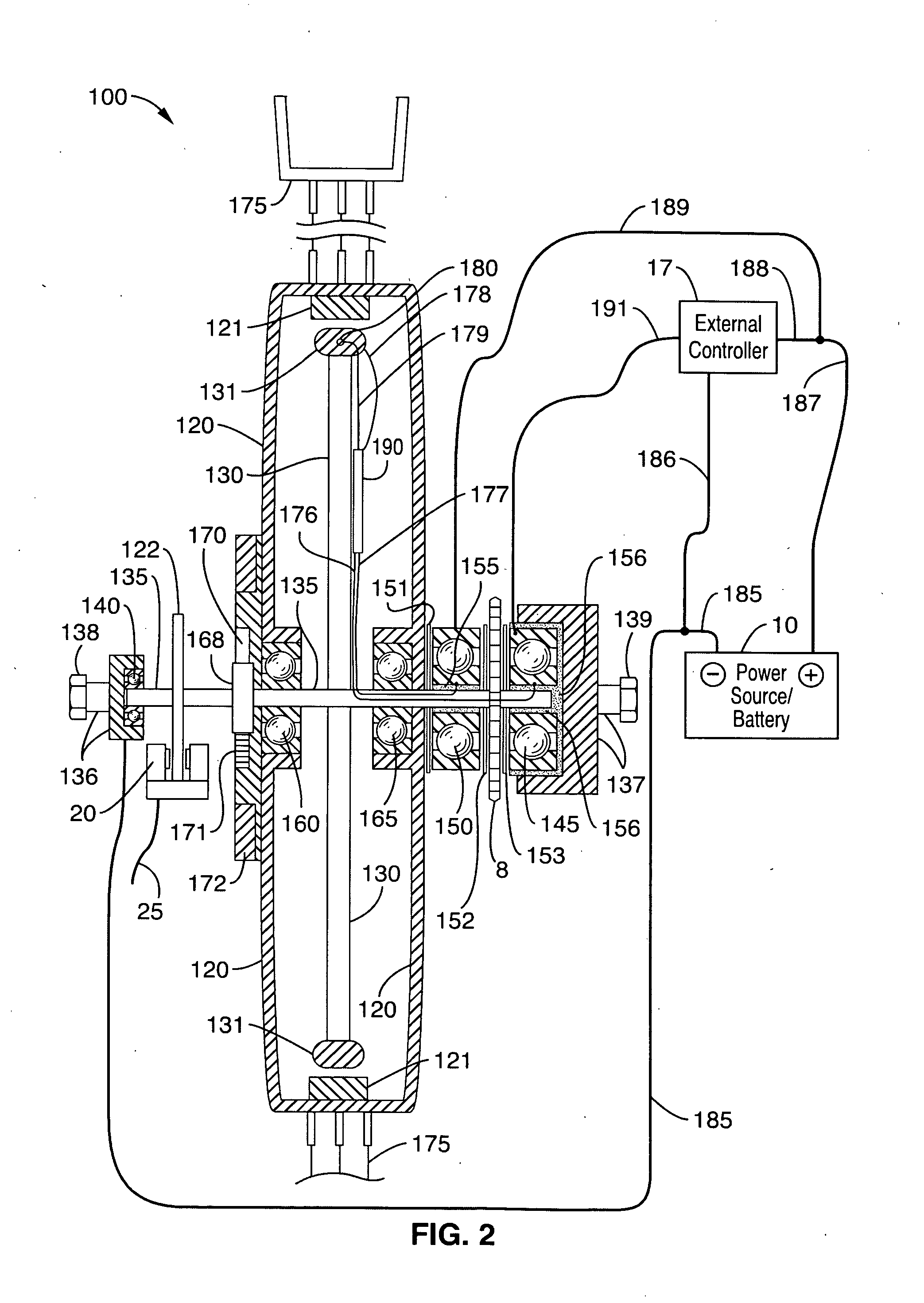Dual-mode counter-rotating-to-traditional electric motor and system
a technology of electric motors and systems, applied in the direction of electric devices, cycles, transportation and packaging, etc., can solve the problems of difficult fabrication, high manufacturing cost, and limited operation life of such motors
- Summary
- Abstract
- Description
- Claims
- Application Information
AI Technical Summary
Benefits of technology
Problems solved by technology
Method used
Image
Examples
Embodiment Construction
[0038]Referring more specifically to the drawings, for illustrative purposes the present invention is presented in the embodiments generally shown in FIGS. 1 through 4. It will be appreciated that the subject invention may vary as to configuration and as to details of the parts without departing from the basic concepts as disclosed herein.
[0039]The subject invention comprises a counter-rotating motor that operates in a dual-mode fashion in which, upon the choice of a user or via suitable programming, the counter-rotating motor, with its oppositely rotating outer and inner rotational members, switches to a traditional motor in which only one rotational member rotates. The benefit of this dual-mode operation is that a motor's efficiency varies with many factors, including the relative rotational motion between the stator (outer rotational member) and the armature (inner rotational member). For a traditional motor only the armature spins and the stator in fixed and the overall motor ou...
PUM
 Login to View More
Login to View More Abstract
Description
Claims
Application Information
 Login to View More
Login to View More - R&D
- Intellectual Property
- Life Sciences
- Materials
- Tech Scout
- Unparalleled Data Quality
- Higher Quality Content
- 60% Fewer Hallucinations
Browse by: Latest US Patents, China's latest patents, Technical Efficacy Thesaurus, Application Domain, Technology Topic, Popular Technical Reports.
© 2025 PatSnap. All rights reserved.Legal|Privacy policy|Modern Slavery Act Transparency Statement|Sitemap|About US| Contact US: help@patsnap.com



